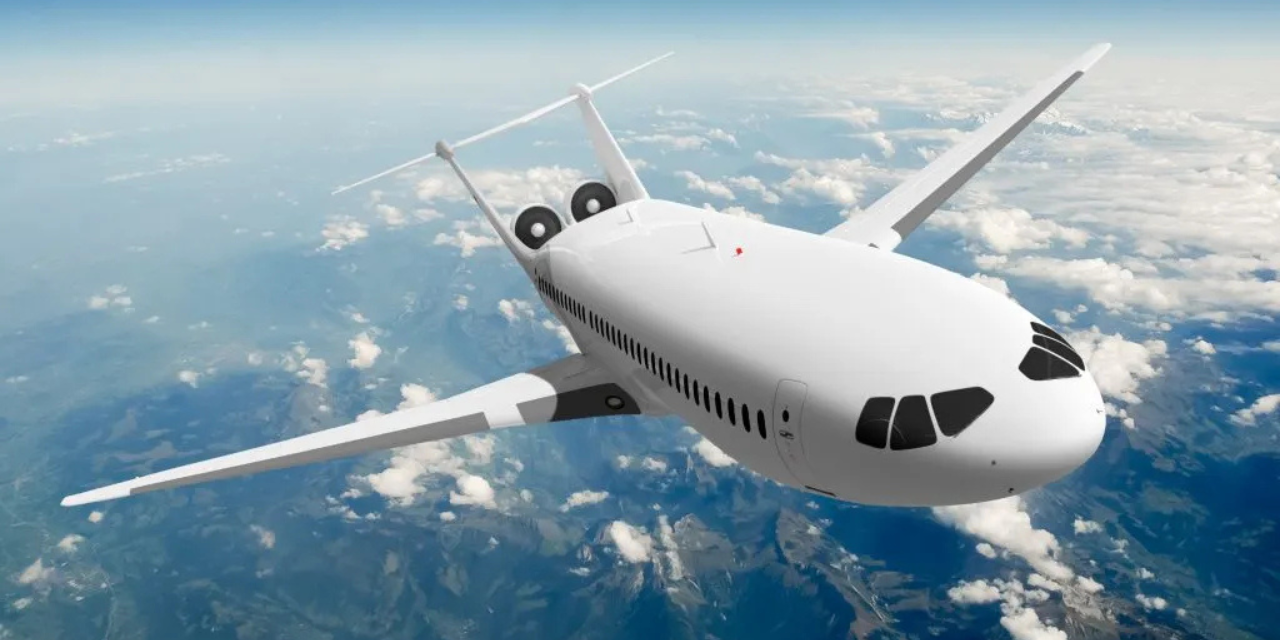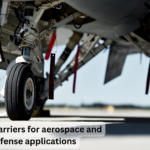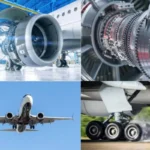Aerodynamic innovations play a pivotal role in reducing fuel consumption in aircraft by minimizing drag, enhancing lift efficiency, and optimizing overall aircraft performance. These advancements improve the aerodynamic efficiency, which directly correlates with lower fuel burn, reduced emissions, and cost savings. Here’s how these innovations contribute to fuel efficiency:
1. Wing Design Innovations
a. High Aspect Ratio Wings
- Description:
- Long, slender wings with a high aspect ratio reduce induced drag (vortex drag caused by lift generation).
- Impact:
- Improved lift-to-drag ratio, especially beneficial during cruise.
- Examples: Boeing 787 and Airbus A350 feature high aspect ratio wings for better fuel efficiency.
b. Winglets and Sharklets
- Description:
- Vertical or angled extensions at the wingtips reduce vortex-induced drag.
- Impact:
- Lower drag reduces fuel consumption by up to 5%.
- Examples: Blended winglets (Boeing), Sharklets (Airbus), and raked wingtips (Boeing 787).
c. Laminar Flow Control
- Description:
- Ensures smooth airflow over the wing surfaces, reducing skin friction drag.
- Technologies:
- Natural Laminar Flow (NLF): Achieved through optimized shaping.
- Hybrid Laminar Flow Control (HLFC): Uses suction to maintain laminar flow.
- Impact:
- Fuel savings of 10-15% in some designs.
2. Fuselage Design Innovations
a. Aerodynamically Shaped Fuselages
- Description:
- Streamlined fuselage shapes minimize pressure drag by allowing smoother airflow around the body.
- Impact:
- Reduced drag and improved overall efficiency.
- Examples: Boeing 787’s “Dreamliner” fuselage design.
b. Blended Wing Body (BWB) Designs
- Description:
- A hybrid design where the wing and fuselage blend seamlessly, reducing surface area and drag.
- Impact:
- Fuel consumption reductions of up to 20-30%.
- Applications: NASA and Airbus are exploring BWB concepts for future aircraft.
3. Propulsion-Integrated Aerodynamics
a. Boundary Layer Ingestion (BLI)
- Description:
- Engines are positioned to ingest the boundary layer airflow, reducing wasted energy from drag.
- Impact:
- Fuel savings of 5-10%.
- Example: NASA’s X-57 Maxwell and MIT’s D8 “Double Bubble” design.
b. Open Rotor Engines
- Description:
- Exposed fans with fewer, larger blades reduce drag and improve propulsion efficiency.
- Impact:
- Significantly lower fuel consumption compared to traditional turbofans.
4. Advanced Control Surfaces
a. Adaptive and Morphing Wings
- Description:
- Wings that adjust their shape during flight to optimize aerodynamics for different phases (takeoff, cruise, landing).
- Technologies:
- Flexible materials and smart actuators.
- Impact:
- Reduced drag and improved efficiency across flight conditions.
b. Active Flow Control
- Description:
- Uses sensors and actuators to control airflow over surfaces in real time.
- Impact:
- Delay in flow separation reduces drag and improves performance.
5. Reduced Weight Through Aerodynamics
- Lightweight Structures:
- Aerodynamic efficiency allows the use of lighter materials and smaller engines, further reducing weight and fuel consumption.
- Distributed Electric Propulsion (DEP):
- Utilizes smaller, distributed electric motors for optimized airflow and reduced drag.
6. Computational Aerodynamics and Wind Tunnel Testing
- Computational Fluid Dynamics (CFD)
- Advanced simulations optimize shapes for minimal drag and maximal lift.
- Wind Tunnel Testing
- Physical testing of designs ensures real-world aerodynamic efficiency.
7. High-Efficiency Aircraft Concepts
a. Reduced Drag Configurations
- Examples:
- Flying V:
- Combines passenger cabin, cargo hold, and fuel tanks into the wings, reducing drag.
- Cruise-Efficient Short Takeoff and Landing (CESTOL):
- Designs reduce takeoff and landing distances without compromising cruise efficiency.
- Flying V:
- Impact:
- Potential fuel savings of 20-30%.
b. Hybrid and Electric Integration
- Impact of Reduced Drag:
- Aerodynamic innovations are particularly beneficial in hybrid-electric and all-electric aircraft, where drag reduction extends the range and enhances energy efficiency.
8. Environmental and Economic Benefits
- Lower Carbon Emissions:
- Reduced fuel consumption directly decreases CO₂ emissions, aligning with global sustainability goals.
- Cost Savings:
- Airlines save millions annually through reduced fuel costs, their largest operating expense.
Challenges and Future Directions
- Complex Manufacturing:
- Advanced aerodynamic designs require precise manufacturing and material technologies.
- Cost of Development:
- High R&D investments for aerodynamic innovations may slow adoption.
- Integration with Existing Fleets:
- Retrofitting aerodynamic improvements like winglets can be cost-effective but may face limitations in older designs.













